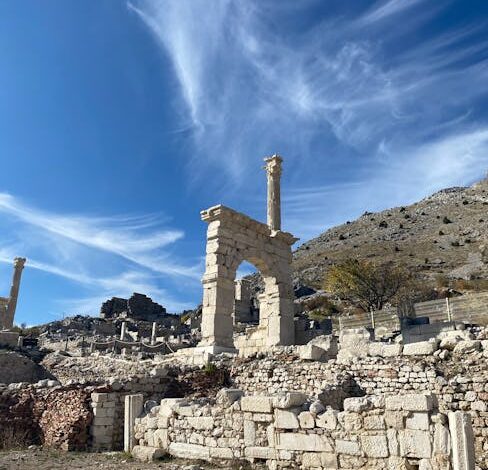The Unseen Dangers Beneath: Firefighters Injured on Site

When we envision the future of infrastructure, especially through the lens of a visionary like Elon Musk, images of groundbreaking tunnels, hyper-efficient transportation, and technological marvels often come to mind. We picture innovation accelerating at warp speed, pushing boundaries previously thought unbreakable. But what happens when that relentless pursuit of progress collides with the very real, often dangerous, world of construction, and the brave individuals who stand ready to respond when things go wrong?
A recent incident at one of Elon Musk’s Boring Company construction sites serves as a stark, sobering reminder that even the most ambitious projects are built on the foundations of human effort and carry inherent risks. It’s a story not of technological triumph, but of the unforeseen dangers faced by our first responders, and the complex questions that arise when safety protocols are tested.
The Unseen Dangers Beneath: Firefighters Injured on Site
The incident itself unfolded at a Boring Company site, where a routine call quickly escalated into a dire situation for a team of dedicated firefighters. Responding to what they likely anticipated as a standard emergency, these professionals found themselves in an environment far more hazardous than expected. The outcome was devastating: multiple firefighters received chemical burns, injuries severe enough to warrant hospital treatment and, tragically, leave them with permanent scars.
It’s a chilling thought. These are the individuals we rely on to rush *into* danger when everyone else is rushing out. They undergo rigorous training for fires, rescues, and hazmat situations. Yet, on this particular day, despite their preparedness, the chemicals present at the Boring Company site proved potent enough to inflict lasting damage. It forces us to pause and consider the unique challenges presented by large-scale, innovative construction projects, particularly those delving underground where the environment can be unpredictable and hazardous materials are often part of the process.
The specifics of the chemical exposure might not be widely detailed, but the impact certainly is. Permanent scars aren’t just cosmetic; they’re a daily reminder of a traumatic event, a testament to the intensity of the exposure. For individuals whose lives are dedicated to protecting others, facing such personal harm in the line of duty highlights the critical need for absolute clarity and stringent safety measures on every job site, regardless of who is at the helm.
Navigating the Aftermath: Accountability, Compliance, and the Unfined Reality
Perhaps one of the most perplexing aspects of this entire incident, beyond the injuries themselves, is the aftermath concerning corporate accountability. According to reports, despite the serious chemical burns sustained by the firefighters, The Boring Company was not fined. This outcome, following a meeting with state officials, raises a multitude of questions about regulatory oversight, enforcement mechanisms, and the broader implications for worker safety standards, particularly for high-profile enterprises.
In most industries, an incident causing permanent injuries would typically trigger a thorough investigation, often culminating in penalties designed to deter future negligence and underscore the importance of safety compliance. The fact that a company involved in an incident of this severity could meet with state officials and subsequently avoid fines suggests a complex interplay of regulations, interpretations, and perhaps, the very specific nature of the discussions held.
When Innovation Meets Regulation
This isn’t just about one company; it’s about the delicate balance between fostering groundbreaking innovation and upholding non-negotiable safety standards. Companies pushing the boundaries of technology and construction often operate in grey areas of existing regulations, or their methods introduce novel risks. This necessitates a proactive and robust approach to safety, not just reactive compliance.
For the firefighters, and indeed for any worker or first responder, knowing that severe injuries occurred without resulting in a punitive fine can be disheartening. It potentially sends a message that the human cost, while tragic, doesn’t always translate into a financial penalty for the corporation involved. This isn’t to say that The Boring Company intentionally disregarded safety, but rather to highlight the need for transparency and clear accountability when incidents of this magnitude occur. It’s about trust – trust that safety is paramount, and that justice, in the form of regulatory action, will be served when it isn’t.
Beyond the Headlines: The Indispensable Role of First Responder Safety
This incident at The Boring Company site casts a spotlight on a critical, yet often overlooked, dimension of industrial safety: the protection of our first responders. When an emergency strikes, it’s not just the company’s internal safety protocols that are tested, but also the preparedness of external agencies like fire departments, paramedics, and hazmat teams.
These brave men and women arrive without full prior knowledge of every chemical on site, every potential structural weakness, or every unique operational hazard. Their ability to safely mitigate a crisis depends heavily on the accuracy and completeness of information provided by the site operators, as well as the inherent safety culture of the organization. Are emergency plans robust? Is chemical inventory clearly documented and accessible? Are site personnel trained to cooperate effectively with external emergency services?
A Call for Proactive Collaboration
The incident underscores the immense value of proactive collaboration between innovative construction companies and local emergency services. This isn’t just about meeting regulatory minimums; it’s about building relationships, conducting joint drills, and sharing detailed site-specific hazard information *before* an emergency arises. Imagine a scenario where firefighters had specific, up-to-date knowledge of the caustic substances present, allowing them to approach the situation with even greater protective measures in place.
Ultimately, the health and safety of first responders should be a non-negotiable priority for any company, especially those engaged in complex engineering projects. Their work is inherently dangerous, and minimizing preventable risks on construction sites isn’t just good practice; it’s a moral imperative that protects those who protect us all.
A Reflection on Progress and Responsibility
The story of the firefighters injured at Elon Musk’s Boring Company site is more than just a fleeting news item. It’s a powerful narrative about the human cost of ambition, the critical importance of robust safety measures, and the ongoing dialogue between innovation and accountability. While we marvel at the potential of underground tunnels and rapid transit, we must never lose sight of the people who build these wonders, nor those who respond when danger inevitably arises. It’s a vivid reminder that progress, however groundbreaking, must always walk hand-in-hand with an unwavering commitment to safety, transparency, and the well-being of every individual involved. For those firefighters now carrying permanent scars, the lesson is etched in their very being – a silent plea for a future where no one has to pay such a price for progress.





